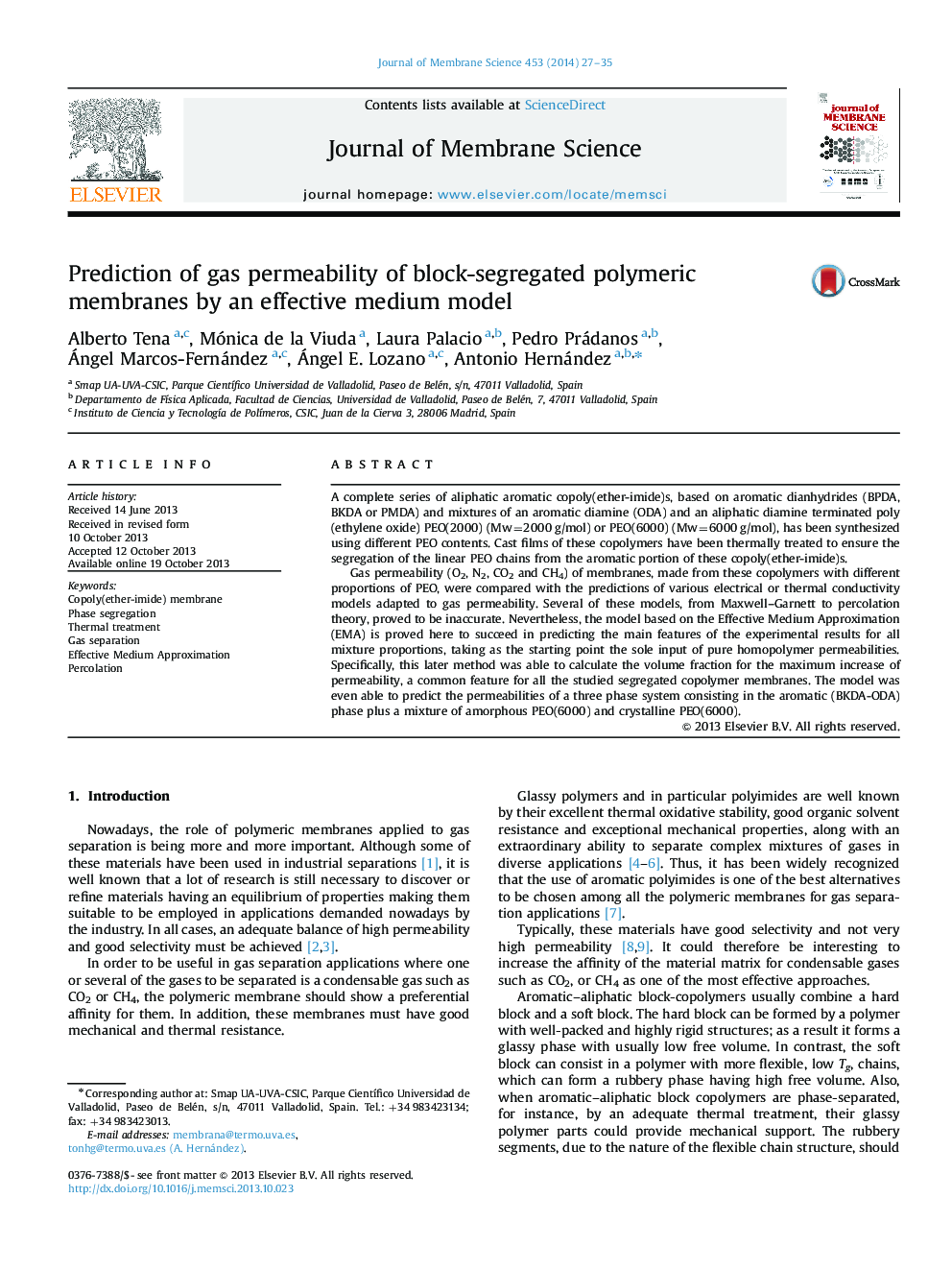| Article ID | Journal | Published Year | Pages | File Type |
|---|---|---|---|---|
| 633766 | Journal of Membrane Science | 2014 | 9 Pages |
Abstract
Gas permeability (O2, N2, CO2 and CH4) of membranes, made from these copolymers with different proportions of PEO, were compared with the predictions of various electrical or thermal conductivity models adapted to gas permeability. Several of these models, from Maxwell-Garnett to percolation theory, proved to be inaccurate. Nevertheless, the model based on the Effective Medium Approximation (EMA) is proved here to succeed in predicting the main features of the experimental results for all mixture proportions, taking as the starting point the sole input of pure homopolymer permeabilities. Specifically, this later method was able to calculate the volume fraction for the maximum increase of permeability, a common feature for all the studied segregated copolymer membranes. The model was even able to predict the permeabilities of a three phase system consisting in the aromatic (BKDA-ODA) phase plus a mixture of amorphous PEO(6000) and crystalline PEO(6000).
Related Topics
Physical Sciences and Engineering
Chemical Engineering
Filtration and Separation
Authors
Alberto Tena, Mónica de la Viuda, Laura Palacio, Pedro Prádanos, Ángel Marcos-Fernández, Ángel E. Lozano, Antonio Hernández,
